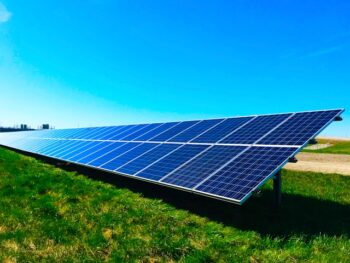Reducing a building’s energy use starts at the top. Roofing plays a critical role in thermal regulation, and the material you choose can significantly affect your power bills. As the push toward sustainable living and energy independence accelerates, roofing is no longer just about shelter—it’s a core component of building-wide efficiency.
Modern roofing systems don’t just protect against weather. They actively reflect sunlight, reduce heat gain, and help buildings retain stable indoor temperatures. To unlock these benefits, installation matters just as much as material. For example, choosing a qualified stone coated steel installation company is essential for maximizing the performance of advanced roofing solutions. Even the best materials underperform if not installed correctly and integrated with proper insulation and ventilation.
Once the roof is doing its job right, the rest of the building benefits. HVAC systems work less, thermal load drops, and energy consumption decreases over time. Let’s break down how it works—and why the material you put overhead can make or break your efficiency goals.
Understanding Heat Transfer Through Building Envelopes
Conduction, Convection, and Radiation in Roofing Systems
Heat moves in three ways: conduction, convection, and radiation. Roofing systems deal with all three. Conduction is the direct transfer of heat through the material—think of metal absorbing the sun’s heat and passing it into the attic. Convection involves air movement—like heat rising into an attic space and circulating unless properly vented. Radiation is heat transfer through electromagnetic waves—like sunlight hitting your roof.
A high-performance roofing system interrupts all three mechanisms. It reduces how much heat gets in, limits how it moves once inside, and minimizes how much escapes in cold months.
How Poor Insulation Drives Up Energy Bills
Many homes lose energy through the roof due to poor insulation and heat transfer. A roof that absorbs heat in summer forces air conditioners to run nonstop. In winter, warm air escapes, causing heaters to work harder. This constant compensation burns more energy—and costs more money.
Materials that naturally resist heat transfer or reflect solar radiation are critical in breaking that cycle. Combined with airtight construction and the right underlayment, the roof becomes a frontline defense against energy loss.
Stone Coated Steel – The Next Generation of Energy-Smart Roofing
Reflective Properties That Keep Buildings Cool
Stone-coated steel roofing is engineered to reflect solar radiation rather than absorb it. Unlike dark asphalt shingles, which absorb heat and transfer it into your attic, these metal panels reflect a significant portion of sunlight away from the structure. This reduces surface temperatures on the roof by up to 50°F during peak sun hours. The result? Cooler interiors, less reliance on air conditioning, and noticeable drops in summer electricity use.
Thermal Mass Benefits for Year-Round Comfort
Beyond reflectivity, stone-coated steel offers thermal mass advantages. Once the sun sets, the material cools rapidly, preventing nighttime heat retention that can disrupt sleep and indoor climate balance. In cooler months, with proper underlayment, the roof system helps retain internal warmth, improving comfort and reducing heating demand. This dual seasonal benefit makes it one of the most versatile materials for diverse climates.
Installation Factors That Affect Performance
Not all energy-efficient roofs perform equally. The gap often lies in the details of installation. Stone-coated steel must be installed with attention to ventilation, air gaps, and substrate preparation. Improper flashing or underlayment can lead to thermal bridging or moisture problems. That’s why working with an experienced stone-coated installation company is critical. They understand how to optimize for energy performance—not just protection from the elements.
Cool Roof Technology and Energy Savings
Solar Reflectance Index Explained
The Solar Reflectance Index (SRI) measures how well a roofing material reflects solar heat and emits absorbed heat. The higher the SRI, the cooler the roof stays under direct sunlight. Many stone-coated steel products boast SRI values of 70 or higher—significantly outperforming standard shingles. These numbers aren’t just technical—they translate into real-world energy savings.
Real-World Energy Reduction Data
Case studies show that homes with cool roofing can see up to 20% reductions in cooling energy usage. In commercial buildings, especially in hot climates, the savings can be even more dramatic. Cities like Los Angeles and Houston now encourage or even require cool roof standards in new construction. These systems lower building temperatures, reduce grid stress during heat waves, and help fight the urban heat island effect.
Metal Roofing Systems for Maximum Efficiency
Standing Seam vs Traditional Metal Options
Standing seam metal roofs are known for their clean design and durability—but not all metal roofs are equal. Some older styles lack the coatings or panel design to reflect heat efficiently. Stone-coated steel combines the longevity of metal with the reflectivity of modern cool roof tech and the visual appeal of traditional roofing materials like tile or shake.
Insulation Integration Strategies
The best roofing systems work in tandem with well-designed insulation. In hot zones, a radiant barrier under the metal panels can stop heat before it enters the attic. In colder regions, dense insulation with vapor barriers helps retain heat inside. With stone-coated steel, there’s flexibility to tailor the system based on regional energy needs—without compromising on strength or lifespan.
Traditional Materials vs Modern Energy-Efficient Alternatives
Asphalt Shingles and Energy Loss
Asphalt remains common, but it’s one of the least efficient roofing materials. It has low reflectivity, poor thermal performance, and a relatively short lifespan. In sunny regions, it can drive up cooling costs significantly.
Clay Tiles in Hot Climates
Clay performs well in dry, hot areas due to its mass and breathability. However, it’s heavy and not ideal for all roof structures. It also lacks the wide reflectivity range of engineered metal systems.
Why Material Choice Matters More Than Ever
With rising energy costs and climate uncertainty, roofing choices are no longer just about style or tradition. Material science has advanced, and options like stone-coated steel give homesteaders, developers, and eco-conscious builders a way to cut energy use without sacrificing durability or appearance.
Smart Roofing Integration with Building Systems
Today’s energy-efficient roofing systems don’t stand alone—they work as part of a larger ecosystem. A smart roof is integrated with insulation, HVAC, ventilation, and even solar technology to create a fully optimized building envelope. Stone-coated steel, for example, pairs well with solar panel mounts due to its strength and long lifespan. Unlike asphalt, it doesn’t degrade under heat, making it a solid foundation for rooftop solar arrays.
Ventilation also plays a key role. Proper attic airflow prevents heat buildup and moisture accumulation, both of which undermine energy performance. Ridge vents, soffit vents, and reflective underlayment all contribute to a roofing system that “breathes” efficiently and supports long-term comfort.
For homesteaders and developers focused on low-impact living, this kind of integration is essential. The roof becomes more than just a surface—it’s an active energy asset. When designed holistically, it reduces power demand, supports clean energy production, and enhances indoor quality of life.
Energy-efficient roofing isn’t just about saving money—it’s about creating buildings that support both people and the planet. Whether you’re building off-grid, upgrading an old roof, or planning a high-performance home, what you put overhead matters more than ever.


